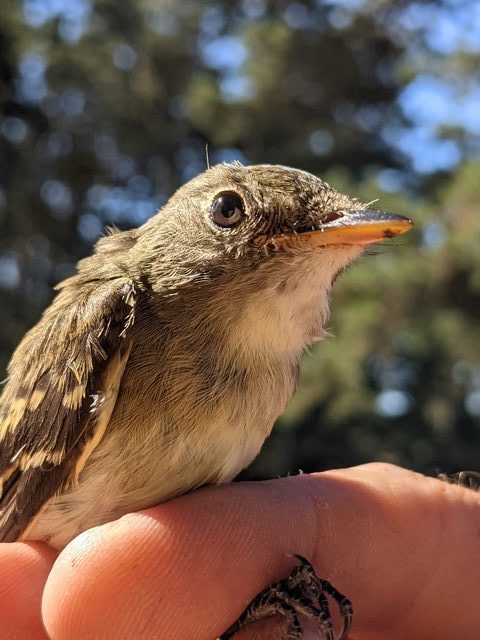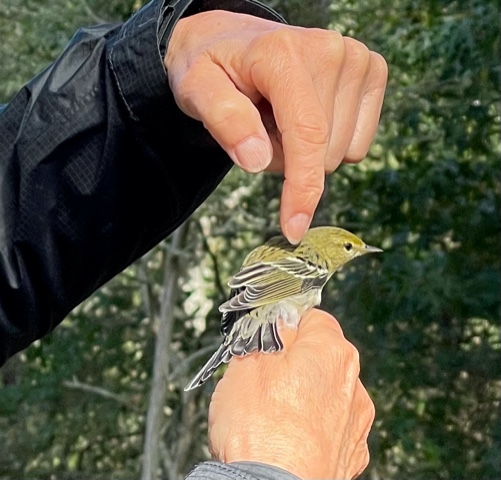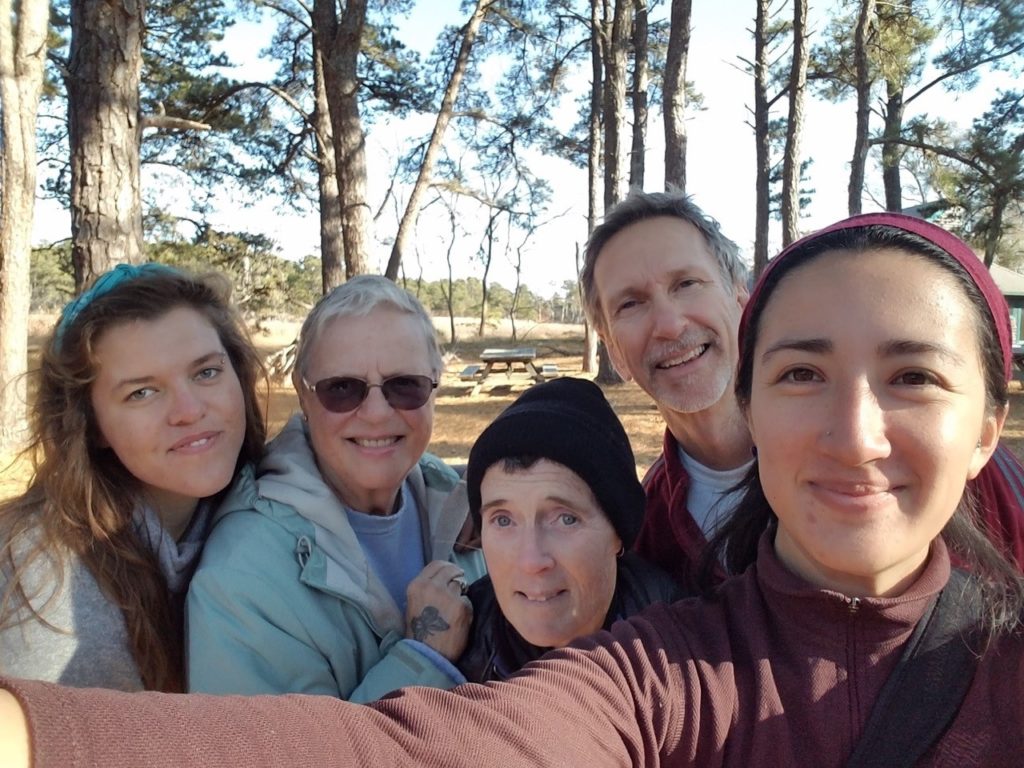The days are growing shorter and cooler as we approach the holiday season. Along with these changes, another season – the fall migration of birds in North America– is drawing to a close. As migration concludes, the bird banders at Wellfleet Bay Wildlife Sanctuary have wrapped up their work for the year.
I have volunteered at the banding station since 2017, and I am still excited to see what each new day will bring. Observing a bird in the hand gives me a better appreciation for the special adaptations that each species has evolved to best fit its unique ecological niche. I have gotten close-up looks at many species that I have glimpsed only fleetingly, if at all, in the field.
There have been over 300 species of birds observed at the Wellfleet Bay Wildlife Sanctuary, but most of those birds don’t reside here; they are simply passing through on their way to their breeding or wintering grounds.
Or some are just very lost, such as this Tropical Kingbird that was first spotted by assistant bander Megan Miller this month. It’s only the third time this species has been recorded on the Cape.

Wellfleet. (Photo courtesy of Mike O’Connor)
Wellfleet Bay’s master bird bander, James Junda, is licensed to band songbirds, and our nets are designed and placed to capture both migrating and resident songbirds. The sanctuary offers many different habitats – open fields, mixed deciduous and coniferous woodlands, salt marsh, and a freshwater pond. Over the course of a typical fall, we will band about 75 different species, including well over one hundred resident Black-capped Chickadees and many migrants. We still get an occasional “first” for the station. This fall, I was lucky enough to extract our first-ever Fox Sparrow, which is rarely seen on the Cape outside the winter months.

As the season progresses, there are several peaks in migration. Some are driven by weather; for example, a northwesterly wind in the fall will cause more birds to ride the wind on their way southward. Others are caused by species’ differing diets. Swallows and flycatchers, which are highly dependent on insects, tend to head south before birds that can survive on seeds and berries. As a result, each day brings something new.

Birds of this genus are tricky to identify, even for the most experienced birders.
In early October, we were inundated with Blackpoll Warblers. Seeing so many of these tiny birds in a short time helped me get over my fall warbler confusion and eventually learn to determine their age and sex.

Blackpolls breed in the boreal forest in Alaska and northern Canada and winter in South America. As they make their southward journey in the fall, the Cape can be their final stop before flying nonstop to Venezuela – a trip that requires four days of continuous flapping!
Blackpolls arrive later in the fall than most warblers of their type (size, diet, wintering grounds) to avoid the possibility of flying non-stop through hurricanes which, in New England, are most likely to occur in September. To prepare for this incredible journey, they build up their bodies’ fat content until their weight nearly doubles. Meanwhile, organs that are not necessary for the trip shrivel to a fraction of their normal size.

A little later in the season, we began to catch Golden-Crowned Kinglets. At about 3 ½ inches long and the weight of a nickel, these tiny balls of energy are only slightly larger than a hummingbird. And yet, they can survive winter temperatures down to -40° Fahrenheit! This capability is even more impressive to me after I hold one in my hand and realize how fragile they are. Some of these birds will over-winter here, and you may find them in shrubs or deciduous trees.
The bird population at Wellfleet Bay is constantly changing with the seasons, so keep a sharp eye, and you may spot something new during each visit. I will be there, observing the changes and looking forward to the spring banding season.
This post was contributed by bird banding station volunteer Tod Christie.


